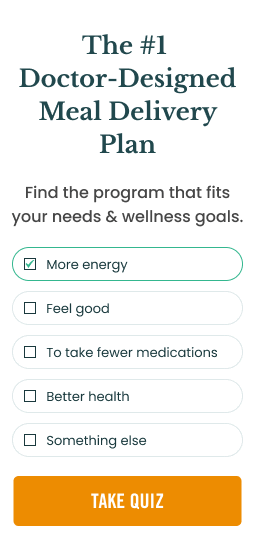
From intermittent fasting to the keto diet, people turn to a myriad of tactics in hopes to lose weight quickly. While some of these weight loss tips can be successful, they are often short-term and unsustainable.
The best way to lose weight fast is by making simple, yet long-term diet changes in your current lifestyle. They should also be on your own terms, as diets that work for you are ones that last.
Use these simple, yet proven tips for weight loss success!
12 Life Hacks for Weight Loss
From reducing empty calorie intake to skipping drive-thrus, easy diet tips can lead to lasting weight loss without major sacrifice.
1. Replace Sugary Drinks with Water
Liquid calories are often a source of empty calories. They add calories without much nutritional benefit and tend to leave the body unsatisfied.
Besides, just one small can of soda can add on 150 calories and about 40 grams of added sugar! Added sugar is one of the top contributors to obesity and increases the risk of heart disease.
Aim to replace sugary drinks with water. Staying hydrated can support a healthy metabolism and aid in good digestion. It can likewise help control hunger and lower the risk of overeating.
Also naturally drink more water each day by:
Using larger cups, though also choosing a cup that is easy to fill and carry.
Keeping water in convenient locations for continuous reminders.
Making your water taste better by flavoring with fresh fruit, herbs, and other enhancers.
Ordering water at restaurants.
2. Add More Dietary Fiber
Dietary fiber is a plant component that cannot be absorbed or digested by the body. It is naturally found in nutritious food sources, including whole grains, fruits and veggies, and legumes.
Compared to diets low in fiber, high-fiber foods are more filling and typically lower in calories. Not only are you more apt to eat less, but likely to feel full longer and more satisfied after meals.
Fiber needs vary with gender. Adult men should aim for 38 grams of fiber daily. Women are encouraged to consume 25 grams per day.
3. Eat Enough Lean Protein
Protein is important for weight loss. The macronutrient induces greater satiety, regulates hunger hormones, curbs carb cravings, and enhances body fat burn.
Protein intake recommendations vary based on a number of factors, including age, weight, gender, and activity levels. However, adults are often encouraged to consume at least 10 to 35 percent of total daily calories from protein sources.
Furthermore, the dietary reference intake (DRI) for protein is 0.8 grams of protein per kilogram (g/kg) of body weight. This amounts to at least 56 and 46 grams per day for men and women, respectively.
Eating a high-protein breakfast is a great way to stabilize blood sugars and control hunger throughout the morning.
4. Balance the Meal Plate
Many may wonder how to know if the body is receiving adequate nutrition. While a Registered Dietitian can help you identify personal needs, use a meal plate as a weight loss hack.
To lose weight without meticulous calorie counting, use these steps for balancing a meal plate:
1. Start by filling half the meal plate with non-starchy veggies, including broccoli, asparagus, and salad greens.
2. Designate a quarter of the plate for a lean protein, such as grilled chicken or sirloin.
3. Use the remaining quarter for brown rice, sweet potato, or another complex carb.
4. Complement the meal with fat, particularly healthy fat sources over trans and saturated fats. These include nuts, seeds, avocados, olive oil, and other fats promoted in the Mediterranean diet.
5. Beat the Snack Attack
Snacks tend to be tossed to the side when trying to lose weight, but doing so may be derailing efforts. It is important, though, to snack sensibly and limit bags of chips, cookies, and other snacks of that nature.
Healthy snacks should supply between 10 to 15 grams of protein. Because again, eating protein is key for weight loss. Pairing protein with fiber can enhance satiety and nutrient content without major worry of empty calories. Including healthy fat in a snack can help induce satiety, too.
6. Skip Regular Drive-Thru Runs
Fast food and drive-thrus have become commonplace in America. But that does not necessarily mean that it should be a part of an easy diet.
Aim to replace one fast food meal each day with a healthier alternative. Healthier eating amidst a busy schedule can be made possible by using these meal prep steps:
Step #1: Take food requests, especially if cooking for more than just yourself.
Step #2: Compile a grocery list, as doing so makes for swift trips to the store. It also lessens the risk of grabbing for unintended foods such as chips and cookies.
Step #3: Shop the store’s perimeter where the most nutritious foods tend to exist. This includes lean proteins and fresh fruits and vegetables.
Step #4: Prep meals and snacks.
Step #5: Store the meals, making sure to organize appropriately.
And if fast food is the only available option, try finding better-for-you menu choices. This includes grilled chicken, salad greens, rice, and other wholesome products. Also, stick to proper portion sizes and limit soft drink refills.
7. Practice Mindful Eating
Mindful eating is an increasing approach to reducing the risk of overeating while leading to successful weight loss. The practice is essentially a nonjudgmental awareness of physical and emotional sensations while eating.
Mindful eating strips down the stigma of “unhealthy” or “bad” foods and promotes the notion of “all foods fit.” People are encouraged to focus on internal hunger and satiety signals, as well as external motivators that drive behaviors to foods.
Tips for mindful eating include the following:
• Eat and chew foods slowly
• Put the fork down between each bite
• Avoid distractions while eating
• Tune into internal hunger and satiety cues
• Recognize the present external world
• Appreciate the food at hand
8. Wait Before a Second Plate
Instead of heading for a second plate, and naturally more calories, wait about 10 to 15 minutes then reassess hunger.
If still truly hungry, go for a smaller serving with nutrient-dense foods. Often, after fifteen minutes you will be as satisfied with the smaller portion as you would be if you ate more.
9. Consider a Weight Loss Meal Delivery Program
Meal delivery programs offer convenience and easy diet plans, bistroMD included. BistroMD’s weight loss program focuses on metabolism correction to not only lose the weight but keep it off!
Every meal plan provides a scientific balance of fiber, lean protein, and healthy fat ratios. The balance of nutrients helps adjust your body's specific metabolic rate to lose weight and achieve successful lifetime weight maintenance.
BistroMD cooks with the freshest ingredients and offers over 200 recipes. So truly, there is always appetizing meal options sure to fit into a customized menu!
10. Include Aerobic Activity & Strength Training
Exercise can accelerate weight loss efforts and improve overall health. Furthermore, partaking in cardio results in faster weight loss by burning more calories per day.
The American Heart Association (AHA) encourages at least 150 minutes of cardio weekly or 30 minutes most days of the week. Cardio exercises that elevate heart rate include:
• Running
• Brisk walking
• Swimming
• Dancing
• Cycling
Also, include resistance training at least twice a week. Strength training increases and preserves muscle mass to accelerate metabolism. Generally speaking, greater muscle mass is able to burn calories more efficiently and quickly, even when the body is at rest.
Simply make it an effort to increase daily movement, too. Taking the steps, biking to work, and parking further away from store entryways are easy ways to be more active. Even just 10 minutes at a time can make a significant difference!
11. Lower Stress Levels
Chronic and ongoing stress can make it difficult to lose weight, particularly related emotional eating and heightened cortisol levels.
While eating can suppress unwanted emotions in the moment, food selections tend to be rich in calories from sugar and fat. If a regular practice, emotional eating can lead to weight gain.
To make matters worse, the body releases cortisol in times of stress. The hormone is known to heighten cravings, store fuel and energy as fat, and slow down metabolism.
So rather than negatively feeding into or avoiding stress, learn to manage it with positive coping strategies. These may include:
• Exercising
• Meditating
• Deep breathing
• Calling a friend
• Taking a warm bath
• Listening to music
• Reading a book
12. Ensure Quality & Adequate Sleep
A lack of sleep may cause weight gain for a number of reasons, including unregulated hunger hormones and intensified emotions. Sleep loss can plummet energy levels, which can compromise physical activity.
Ensure adequate sleep by staying consistent with bed and wake times and creating a comfortable environment. Limit caffeine, large meals, and screen time leading up to bedtime as well.





